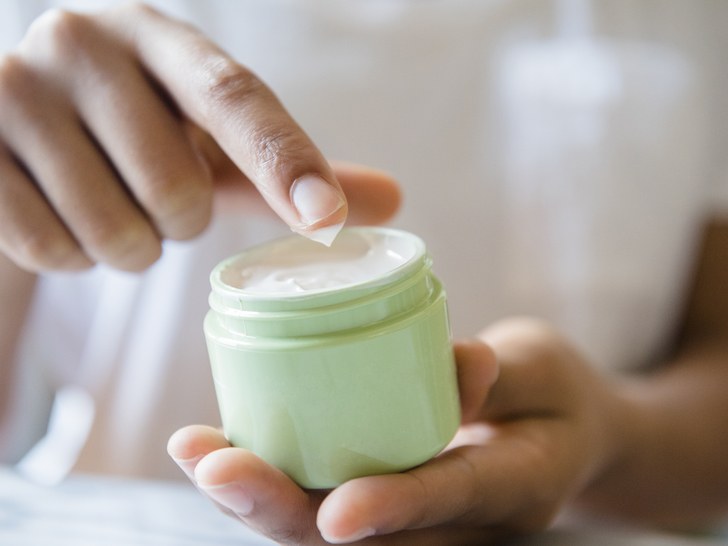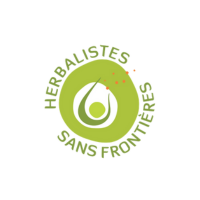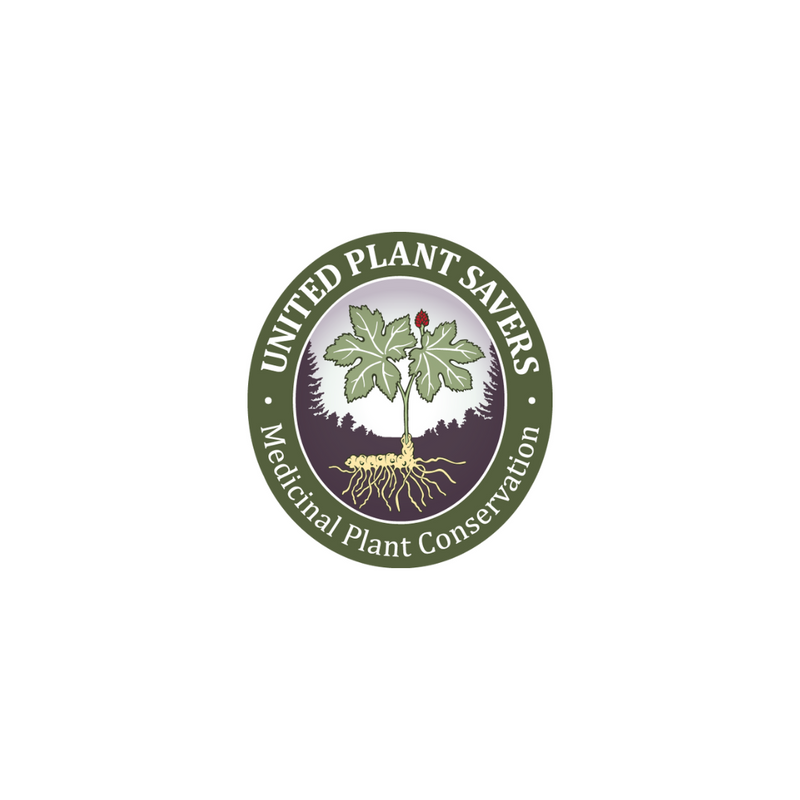
Deo for your B.O.
Share
Haven Herbs is keenly aware that the vast majority of the body care items made for US markets is toxic. Toxic ingredients, banned elsewhere, are used to cheapen formulas and to do jobs that our bodies do not actually need to stay healthy.
Today, we'll discuss deodorant and anti-perspirant and what is wrong with them- and why Haven decided that making effective, natural, and clean alternatives was so important.
 The physiology: Two types of sweat glands saturate your underarms. The eccrine glands produce sweat, which escapes through pores on the skin's surface. The apocrine glands merge with hair follicles under the surface. Fluids from these glands mix with bacteria (warm, dark, and moist, your pits are the perfect breeding ground for stinky bacteria) and produce the unpleasant stench we call body odor.
The physiology: Two types of sweat glands saturate your underarms. The eccrine glands produce sweat, which escapes through pores on the skin's surface. The apocrine glands merge with hair follicles under the surface. Fluids from these glands mix with bacteria (warm, dark, and moist, your pits are the perfect breeding ground for stinky bacteria) and produce the unpleasant stench we call body odor.
Anti-perspirants clog your eccrine glands with aluminum, making your body unable to produce sweat that causes odor, but also unable to purge toxins from the body. Your body needs to sweat not only to cool you down, but to remove things that are not helpful. Stopping that process, day-after-day is unhealthy and leads to all kinds of issues. This is why Haven only makes deodorants, not anti-perspirants. We disagree with the entire premise of stopping sweat.
Deodorants also have health concerns- based on what kinds of ingredients are contained within. Many brands (even "natural" ones) contain endocrine disruptors—chemicals that may mess with the function of your body’s reproductive and developmental hormones. Blood tests show that many of the substances commonly included in deodorant products can, in fact, worm their way past the epidermis and into the body and get stored in fat cells.
 Here are some troublesome ingredients to look for your deodorant label:
Here are some troublesome ingredients to look for your deodorant label:
Aluminum: Aluminum, a metal, is a common ingredient in anti-perspirants that works by “plugging” sweat ducts to stop sweating. Aluminum can cause genomic instability on the level of the cells, meaning it can increase our cells’ tendency to mutate; mutations can increase the chance of tumor growth. Aluminum chlorohydrate is one of the most common compounds used in antiperspirants. Scientists don’t currently totally understand how aluminum is absorbed through our skin, and so they can’t truly assess the risk aluminum in antiperspirants poses. However, three European reports assessing aluminum’s safety have concluded that aluminum is not safe for use in personal care products as it’s currently used.
Triclosan: Triclosan is an antibacterial chemical, used in deodorants to kill odor-causing germs on the skin. Triclosan is an endocrine disruptor, meaning it can mimic hormones or interfere with hormonal signaling. The chemical’s disrupting abilities is supported by numerous studies.[i] The chemical is also associated with an increased risk of breast cancer. The plethora of health concerns associated with triclosan, both to people and aquatic life, has led the FDA to ban its use in hand soaps. However, the chemical is still permitted for use in other products, like deodorant.
Phthalates: Phthalates, pronounced tha-lates, are common ingredients in all personal care products, including deodorant and antiperspirants. The chemicals are used to make other ingredients more flexible and are also used as fragrance ingredients. The primary concern with phthalates is their ability to disrupt the endocrine system, especially in males. Phthalates also impact female health, as exposure can cause early onset puberty, which is associated with breast cancer later in life.
Parabens: Parabens are ingredients used primarily as preservatives and are often used in combination in products. The preservatives in personal care products have the capability to be absorbed through the skin. Parabens are hormone impersonators, mimicking estrogen in the body. Exposure to parabens has been linked to breast cancer. In fact, over 80% of breast tumor biopsies contained parabens. Very concerning- given the proximity of the arm pit to breast tissue.
Fragrance: Fragrance formulations, which are often trade secret information, can contain hundreds of ingredients. Because the formulations are trade secrets, the identity of ingredients is often unknown, making it essentially impossible to identify all the ways in which fragrance ingredients might impact health. However, we have identified some common fragrance ingredients. Synthetic musks, like galaxolide and tonalide, are linked to hormone disruption. Fragrance formulations also commonly contain allergens, so much so that the European Union requires cosmetic companies to list 26 common fragrance allergens on packaging. Fragrance formulations also contain phthalates, in addition to thousands of other ingredients currently in use. Avoid products with undisclosed fragrance. The word “fragrance” on labels means there can be many mystery ingredients inside. Without full transparency, it’s impossible to know what you’re being exposed to.
Propylene Glycol: The petroleum-based ingredient propylene glycol is present in many antiperspirants and deodorants. It’s the ingredient that gives deodorant a slick consistency so we can slather it on our skin. Bad news is that in large quantities it can do damage to the central nervous system, the heart and the liver. To be fair, this is like saying that broccoli in large doses is lethal, but no one would ever eat that much anyway, so it’s a moot point. The amount of propylene glycol used in the average stick of deodorant is probably completely safe in small quantities, but it’s worth mentioning- because we do not know if it is bioaccumulative (meaning prolonged, daily exposure causes a problem).
Butane and Isobutane: These gasses are used as propellants in aerosol deodorants. Isobutane is an isomer of butane, meaning it’s a compound with a different molecular structure. Butane is prohibited from cosmetics in the European Union, and restricted in Canada. However, there are no such restrictions in the United States. In fact, the Cosmetic Ingredient Review, an industry-funded panel, has deemed both ingredients as safe, regardless of other global restrictions.
 So what should you buy instead? Obviously, a natural deodorant without these ingredients is a good start.
So what should you buy instead? Obviously, a natural deodorant without these ingredients is a good start.
Lily, our formulator, starting making deodorants for customers of Boline Apothecary when she heard that natural deodorants either did not work (meaning the smell was not eliminated most of the day) or it was irritating and caused "fire pits". (This is a red, irritated rash after using a deodorant that is too alkaline- most natural deodorants rely on cheap and effective baking soda to neutralize armpit PH. It's a good strategy, except a lot of people cannot apply it daily without pain. It's just too alkaline.)
So she started experimenting with ingredients and formulas to create a formula that was clear of all toxins, didn't use too much baking soda, and still worked! And after many tries, she achieved the recipe for our Pit Paste. She makes it in 4 types- unscented, for sensitive skin; Cedar Clove, an earthy unisex scent; Field of Flowers, a delightful floral scent; and Rosemary Mint, an uplifting unisex scent. She also started making a spray deodorant for those not wanted a she butter-based paste. Pitz Spritz comes in an herbal scent and is light and easily portable.
Take your health into your hands and start using an all natural deodorant today- ours is even more clean than most, because we do not package in plastic. Plastic toxifies body care and food and should not be used by companies looking to make clean products.
Today, we'll discuss deodorant and anti-perspirant and what is wrong with them- and why Haven decided that making effective, natural, and clean alternatives was so important.
 The physiology: Two types of sweat glands saturate your underarms. The eccrine glands produce sweat, which escapes through pores on the skin's surface. The apocrine glands merge with hair follicles under the surface. Fluids from these glands mix with bacteria (warm, dark, and moist, your pits are the perfect breeding ground for stinky bacteria) and produce the unpleasant stench we call body odor.
The physiology: Two types of sweat glands saturate your underarms. The eccrine glands produce sweat, which escapes through pores on the skin's surface. The apocrine glands merge with hair follicles under the surface. Fluids from these glands mix with bacteria (warm, dark, and moist, your pits are the perfect breeding ground for stinky bacteria) and produce the unpleasant stench we call body odor.Anti-perspirants clog your eccrine glands with aluminum, making your body unable to produce sweat that causes odor, but also unable to purge toxins from the body. Your body needs to sweat not only to cool you down, but to remove things that are not helpful. Stopping that process, day-after-day is unhealthy and leads to all kinds of issues. This is why Haven only makes deodorants, not anti-perspirants. We disagree with the entire premise of stopping sweat.
Deodorants also have health concerns- based on what kinds of ingredients are contained within. Many brands (even "natural" ones) contain endocrine disruptors—chemicals that may mess with the function of your body’s reproductive and developmental hormones. Blood tests show that many of the substances commonly included in deodorant products can, in fact, worm their way past the epidermis and into the body and get stored in fat cells.
 Here are some troublesome ingredients to look for your deodorant label:
Here are some troublesome ingredients to look for your deodorant label:Aluminum: Aluminum, a metal, is a common ingredient in anti-perspirants that works by “plugging” sweat ducts to stop sweating. Aluminum can cause genomic instability on the level of the cells, meaning it can increase our cells’ tendency to mutate; mutations can increase the chance of tumor growth. Aluminum chlorohydrate is one of the most common compounds used in antiperspirants. Scientists don’t currently totally understand how aluminum is absorbed through our skin, and so they can’t truly assess the risk aluminum in antiperspirants poses. However, three European reports assessing aluminum’s safety have concluded that aluminum is not safe for use in personal care products as it’s currently used.
Triclosan: Triclosan is an antibacterial chemical, used in deodorants to kill odor-causing germs on the skin. Triclosan is an endocrine disruptor, meaning it can mimic hormones or interfere with hormonal signaling. The chemical’s disrupting abilities is supported by numerous studies.[i] The chemical is also associated with an increased risk of breast cancer. The plethora of health concerns associated with triclosan, both to people and aquatic life, has led the FDA to ban its use in hand soaps. However, the chemical is still permitted for use in other products, like deodorant.
Phthalates: Phthalates, pronounced tha-lates, are common ingredients in all personal care products, including deodorant and antiperspirants. The chemicals are used to make other ingredients more flexible and are also used as fragrance ingredients. The primary concern with phthalates is their ability to disrupt the endocrine system, especially in males. Phthalates also impact female health, as exposure can cause early onset puberty, which is associated with breast cancer later in life.
Parabens: Parabens are ingredients used primarily as preservatives and are often used in combination in products. The preservatives in personal care products have the capability to be absorbed through the skin. Parabens are hormone impersonators, mimicking estrogen in the body. Exposure to parabens has been linked to breast cancer. In fact, over 80% of breast tumor biopsies contained parabens. Very concerning- given the proximity of the arm pit to breast tissue.
Fragrance: Fragrance formulations, which are often trade secret information, can contain hundreds of ingredients. Because the formulations are trade secrets, the identity of ingredients is often unknown, making it essentially impossible to identify all the ways in which fragrance ingredients might impact health. However, we have identified some common fragrance ingredients. Synthetic musks, like galaxolide and tonalide, are linked to hormone disruption. Fragrance formulations also commonly contain allergens, so much so that the European Union requires cosmetic companies to list 26 common fragrance allergens on packaging. Fragrance formulations also contain phthalates, in addition to thousands of other ingredients currently in use. Avoid products with undisclosed fragrance. The word “fragrance” on labels means there can be many mystery ingredients inside. Without full transparency, it’s impossible to know what you’re being exposed to.
Propylene Glycol: The petroleum-based ingredient propylene glycol is present in many antiperspirants and deodorants. It’s the ingredient that gives deodorant a slick consistency so we can slather it on our skin. Bad news is that in large quantities it can do damage to the central nervous system, the heart and the liver. To be fair, this is like saying that broccoli in large doses is lethal, but no one would ever eat that much anyway, so it’s a moot point. The amount of propylene glycol used in the average stick of deodorant is probably completely safe in small quantities, but it’s worth mentioning- because we do not know if it is bioaccumulative (meaning prolonged, daily exposure causes a problem).
Butane and Isobutane: These gasses are used as propellants in aerosol deodorants. Isobutane is an isomer of butane, meaning it’s a compound with a different molecular structure. Butane is prohibited from cosmetics in the European Union, and restricted in Canada. However, there are no such restrictions in the United States. In fact, the Cosmetic Ingredient Review, an industry-funded panel, has deemed both ingredients as safe, regardless of other global restrictions.
 So what should you buy instead? Obviously, a natural deodorant without these ingredients is a good start.
So what should you buy instead? Obviously, a natural deodorant without these ingredients is a good start.Lily, our formulator, starting making deodorants for customers of Boline Apothecary when she heard that natural deodorants either did not work (meaning the smell was not eliminated most of the day) or it was irritating and caused "fire pits". (This is a red, irritated rash after using a deodorant that is too alkaline- most natural deodorants rely on cheap and effective baking soda to neutralize armpit PH. It's a good strategy, except a lot of people cannot apply it daily without pain. It's just too alkaline.)
So she started experimenting with ingredients and formulas to create a formula that was clear of all toxins, didn't use too much baking soda, and still worked! And after many tries, she achieved the recipe for our Pit Paste. She makes it in 4 types- unscented, for sensitive skin; Cedar Clove, an earthy unisex scent; Field of Flowers, a delightful floral scent; and Rosemary Mint, an uplifting unisex scent. She also started making a spray deodorant for those not wanted a she butter-based paste. Pitz Spritz comes in an herbal scent and is light and easily portable.
Take your health into your hands and start using an all natural deodorant today- ours is even more clean than most, because we do not package in plastic. Plastic toxifies body care and food and should not be used by companies looking to make clean products.




